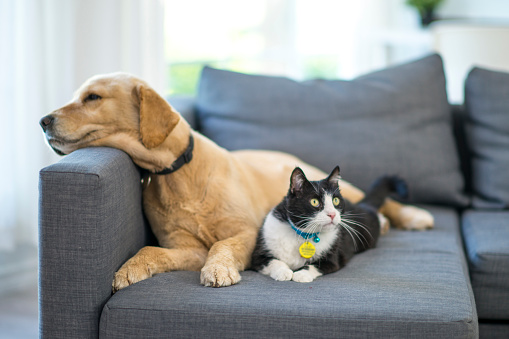Editor’s note: Diane Crispell is a senior consultant on the consumer life team at research firm GfK, New York. This is an edited version of a post that originally appeared here under the title, “How brands can appeal to pet parents.”
With several family members on the move this spring, my husband and I found ourselves temporary caretakers for a series of pets including our niece’s cat. She was a sweet houseguest, although our own two cats didn’t think so. Fortunately, we are empty nesters with enough space that our feline lodger had her own two-room suite. Talk about being pampered!
We are long-time devoted pet owners ourselves, so I wasn’t surprised at the amount of equipment, toys and other accoutrements that my niece dropped off with her “only child.” I was, however, slightly bemused by the tube of Freshpet refrigerated food she brought in a cooler. As a health-focused Millennial, she is a prime target for these products. I dutifully purchased refills during our guest’s stay but didn’t become a convert. On the other hand, I was inspired to purchase a vertical scratching post for our cats.
Our experience is a microcosm of several trends we’ve seen emerging in the pet market via. GfK’s Point-of-Sale (POS) data reports show. Pet owners are focused on dietary health and trying new things. They don’t sit around the house all the time, either.
Dogs vs. cats
 Just over half of global consumers (54 percent) are pet owners, according to the recently released GfK Consumer Life global study. One in three has dogs and about one in four has cats, while nearly 20 percent have fish, birds or other animals. There is overlap, of course.
Just over half of global consumers (54 percent) are pet owners, according to the recently released GfK Consumer Life global study. One in three has dogs and about one in four has cats, while nearly 20 percent have fish, birds or other animals. There is overlap, of course.
Of the 21 countries covered in the study, pets are most popular in Latin America, Argentina, Mexico and Brazil, and dogs are by far the pet of choice. The only places where more people have cats than dogs are France, Germany, Indonesia, Russia and Sweden, although Russia is the only country where cat owners attain majority status, at 58 percent.
At home and on the road
Pet owners of the world are a mix of home-based and outgoing, finds the GfK global study. They are more likely than average to do yard work and home improvements on a regular basis but are also more likely to go out for entertainment and to travel.
This means that pet owners’ homes and yards need to be pet-friendly, whether they are home owners or renters. Growing numbers of apartment complexes are offering dog parks and dog-washing stations, for example.
People don’t always want to leave their pet companions at home, though. The lodging industry is becoming more receptive to travelers with pets and resources like petwelcome.com can help locate them. But there are opportunities for all kinds of businesses to get involved, such as excursions and car rental agencies.
Everyday destinations should think about accommodating pets, too. Stores with sidewalk access sometimes put out the welcome mat by offering water bowls and treats for dogs who are out and about with their human family members. Pet stores routinely allow pets, of course, and most places allow service dogs. But given the reports of heat-related deaths of pets left in cars every year, maybe more retailers should be pet-friendly. This doesn’t have to mean letting animals roam free; there are such things as pet strollers and places to safely park pets outside stores. Some large stores offer child care services – why not a pet-sitting service?
Healthy decisions
Global pet owners are more inclined than their peers to follow a specific diet for their health and to say that local is an important factor in their food and beverage choices. Furthermore, GfK Consumer Life research reveals that American pet owners are more likely than average to have used a meal-kit delivery service such as Blue Apron in the past month.
Pets are often considered family members, so it follows that their owners will extend the attitudes they hold about their own health and food habits to their animal companions. This has certainly been evident in the rising sales of pet foods that are free of certain ingredients and have few ingredients, according to the ongoing GfK pet-food POS study. Maybe locally produced pet products and meal-kit services will appeal, too.
Looking for new products
Pet owners are more likely than average to agree that they are always “on the lookout for new products and services” and “looking for novelty and fun, even in everyday products.” They are also more interested in other people’s opinions about what to buy and tend to discuss products and brands on social media more often.
This means that the pet market is one that is open to innovation and sharing information. Even if you’re not in the pet industry, there is likely a way for you to be involved with these important members of the family.
